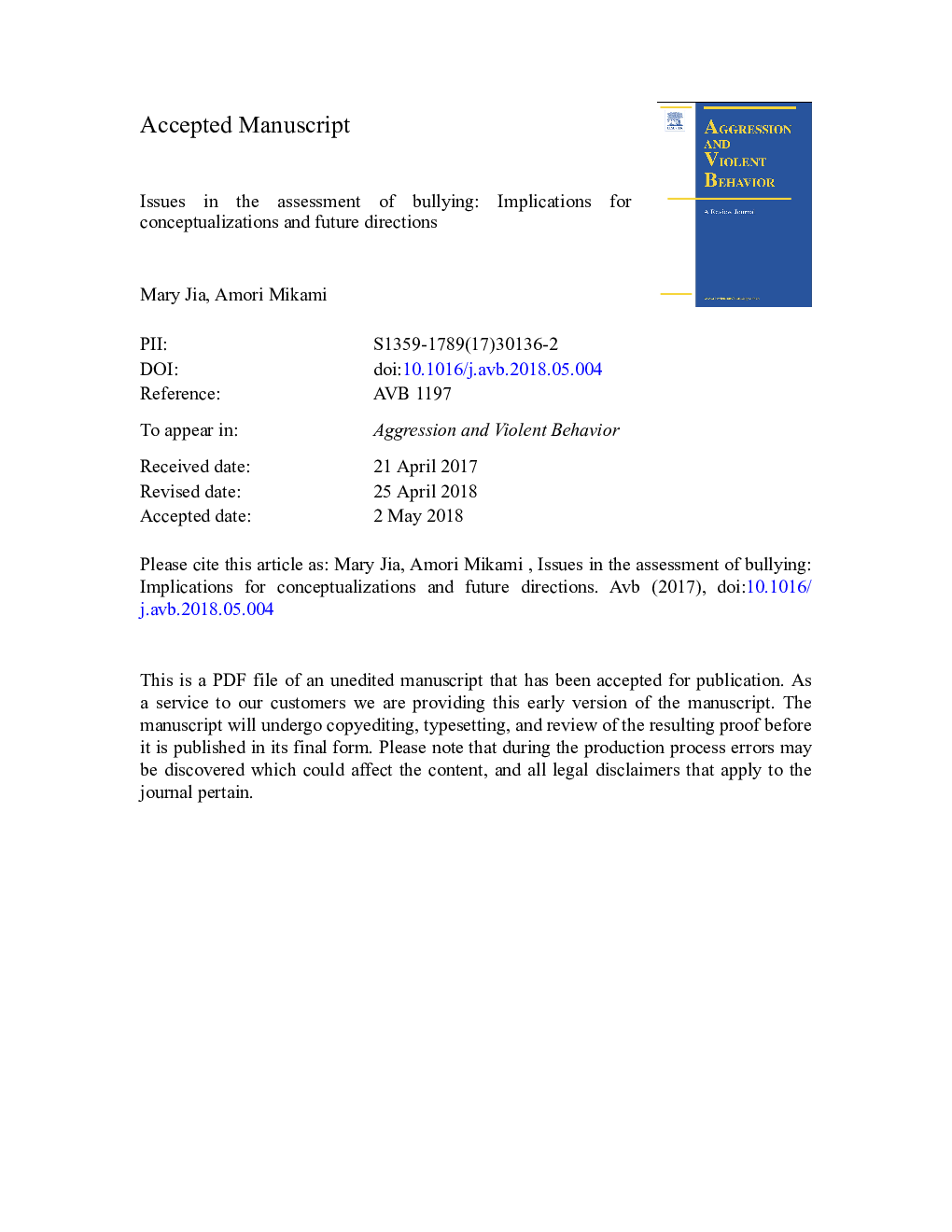| Article ID | Journal | Published Year | Pages | File Type |
|---|---|---|---|---|
| 6549899 | Aggression and Violent Behavior | 2018 | 54 Pages |
Abstract
Bullying, a common type of violent behavior in school-aged youth, is traditionally conceptualized as a particular form of repeated peer aggression that is intentional and that involves a power differential between the bully and the victim. Intentionality and power differentials distinguish bullying from general aggression between peers which may lack these characteristics. Despite the fact that nearly every investigation of bullying references this specific definition, studies infrequently constrain their assessment of bullying to ensure that intentionality and power differentials are present. This review (a) argues for why the existing inconsistency in requiring intentionality and power differentials when assessing bullying is a problem for the field, (b) explores challenges in validly ensuring intentionality and power differentials are present when assessing bullying, and (c) puts forward recommendations for more clearly distinguishing between bullying and general peer aggression in future work.
Related Topics
Health Sciences
Medicine and Dentistry
Forensic Medicine
Authors
Mary Jia, Amori Mikami,
